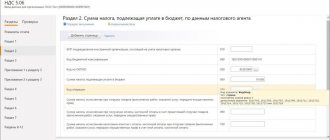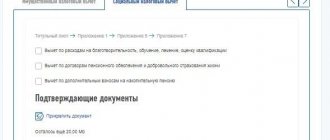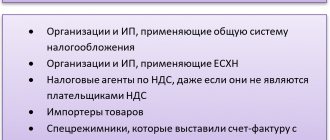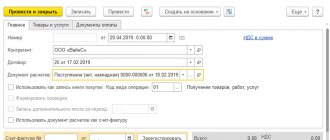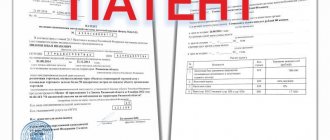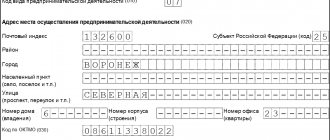See the table for all VAT transaction codes in 2021 with explanations. They are used when filling out section 7 of the declaration, the purchase book and the sales book. VAT transaction codes in 2021 with explanation
Let's list the transaction codes for the purchase book. In 2021, the list of codes from the appendix to the order of the Federal Tax Service of Russia dated March 14, 2016 No. ММВ-7-3/136 is in force. Codes are needed when a company records invoices in the purchase ledger. All codes in the table except 32 - it refers only to the special economic zone in the Kaliningrad region.
IMPORTANT
Select codes depending on which section of the declaration you are filling out and what specific operation you are having.
Codes for section 2, Appendix 1 to section. 3, section 4 – 7 declarations are given in Appendix No. 1 to the Procedure for filling out a VAT declaration. There are a lot of them. Choose the code exactly for your operation.
Codes for section 8 – 11 and Appendices to Section. and take the same declarations that you had in the books of purchases and sales (additional sheets to them) and in the journal of invoices.
Transaction type codes with decoding for the purchase book
| Situation | Designation |
| The buyer purchased goods, works or services. | 01 |
| The buyer purchased goods, works or services through a commission agent, an agent who acts on his own behalf (forwarder). | 01 |
| The seller received returned goods from the buyer on the common system, which he accepted for accounting. The buyer issued an invoice for these goods. | 01 |
| The seller received from the buyer on the general system the entire batch of returned goods, which he did not accept for accounting. The seller records his own invoice for the shipment of these goods in the purchase ledger. | 01 |
| The seller drew up a single adjustment invoice, in which he reduced the cost of shipments. | 01 |
| The buyer received an adjustment invoice or a single adjustment invoice in which the seller increased the cost of shipments. | 01 |
| The company claimed a deduction from the cost of construction and installation work for its own consumption. | 01 |
| The company received property from the participant as a contribution to the authorized capital. | 01 |
| The buyer made an advance payment to the seller. | 02 |
| The buyer made an advance payment through a commission agent or agent who purchases the goods on his own behalf. | 02 |
| The company claimed to deduct VAT, which it paid as a tax agent. | 06 |
| The company acquired the work of contractors for capital construction, modernization, and reconstruction of real estate. Or the company claims a deduction for materials, equipment, and contractors’ work based on the developer’s consolidated invoice. | 13 |
| The seller received returned goods from the buyer in special mode. If the buyer has returned part of the goods, the seller issues an adjustment invoice. If the buyer returned the entire shipment of goods, the seller claims a deduction based on the invoice that he previously prepared for the shipment. | 16 |
| The seller received returned goods from the individual buyer. | 17 |
| The seller issued an adjustment invoice to the buyer, in which he reduced the cost of the goods: - due to a decrease in price (tariff); - due to short delivery; - if the buyer on the general system returned some of the goods that were not accepted for registration. | 18 |
| The company imported goods from Belarus, Kazakhstan, Armenia or Kyrgyzstan (Eurasian Economic Union). | 19 |
| The company imported goods from countries that do not belong to the Eurasian Economic Union. | 20 |
| The seller declared a deduction of VAT, which he had previously charged on the advance payment: - on the date of shipment; - if you returned the advance to the buyer. | 22 |
| The company claimed a deduction for travel or entertainment expenses based on the BSO. | 23 |
| The exporter assessed tax on unconfirmed exports. Then he confirmed the 0 percent rate and claimed a deduction for the tax paid. | 24 |
| The company sold goods for export and restored the input tax on them. Then she confirmed the 0 percent rate and claimed a deduction. | 25 |
| On the date of shipment, the seller declared a deduction from advances received from buyers on a special regime or individuals. In the purchase book, the accountant registers an invoice or initial advance payment with summary data for the month or quarter. | 26 |
| The seller prepared an adjustment invoice or initial invoice for a reduction in tariffs for buyers on a special regime or individuals with summary data for a month or quarter. | 26 |
| The commission agent purchased goods, works or services from different sellers, received several invoices for one date and issued a consolidated invoice to the principal. The principal accepted VAT for deduction based on this invoice. Code 27 also indicates the principal who received the consolidated invoice of the agent acting on his own behalf. | 27 |
| The commission agent received several advance invoices from sellers for one date and issued a consolidated invoice for the advance payment to the principal. The principal claimed a deduction based on this invoice. | 28 |
| The number 28 is also indicated by the principal if he received a consolidated invoice for the advance from an agent who acts on his own behalf. |
VAT transaction codes with explanation for the sales book
| Situation | Designation |
| The seller shipped the goods, sold work or services. | 1 |
| The company transfers goods, performs work, and services for its own needs. | 1 |
| The company carries out construction and installation work for its own consumption. | 1 |
| The seller received amounts related to payment for goods, work or services. For example, interest or discount on bills transferred by the buyer, if they are higher than interest at the key rate. | 1 |
| The seller calculates the tax on the inter-price difference if: - he sold property that was included in VAT; — sold agricultural products and their processed products, which were previously purchased from individuals; — bought cars from individuals for resale, and then sold them. | 1 |
| The company restored the tax on the value of property that it transferred to the authorized capital of another organization. | 1 |
| The company sold goods for export. | 1 |
| The seller sold goods, works or services through a commission agent or agent who acts on his own behalf. | 1 |
| Using the common system, the buyer returned the goods accepted for registration to the seller. The buyer issued an invoice for the cost of goods | 1 |
| The buyer received a single adjustment invoice in which the seller reduced the cost of shipments. | 1 |
| The seller issued an adjustment invoice or a single adjustment invoice, in which he increased the cost of shipments. | 1 |
| The seller received an advance from the buyer. | 2 |
| The seller received the advance payment through a commission agent or agent who acts on his own behalf. | 2 |
| The company calculated VAT as a tax agent if it transferred payment: - when purchasing goods, works or services in the Russian Federation from a foreign seller; - for renting state or municipal property or when purchasing it. | 6 |
| The company, as an intermediary, purchased goods, works or services in the Russian Federation from a foreign counterparty and withheld VAT as a tax agent. | 6 |
| The company sells goods, works or services free of charge. | 10 |
| The contractor carries out capital construction, modernization or reconstruction of real estate. | 13 |
| The company transferred property rights under an assignment agreement. For example, if the supplier sold the buyer’s debt to pay for goods (clauses 1-4 of Article 155 of the Tax Code of the Russian Federation). | 14 |
| The commission agent issued one invoice to the buyer for the principal's goods and his own goods. In the sales book, the commission agent lists the tax only on the cost of his own goods. The number 15 is also given by an agent who acts on his own behalf if he has included his goods and the goods of the principal in the invoice. | 15 |
| The buyer received an adjustment invoice for the price (tariff) reduction. | 18 |
| The company restored the tax. For example, if the buyer received the goods and restored the VAT, which was previously deducted from the advance payment. There is no need to put the number 21 if the company: | 21 |
| - transferred property to the authorized capital - designated “01”; | |
| - received an adjustment invoice for a reduction in price (tariff) - denoted “18”. | |
| The seller sold goods, works, services to buyers on a special regime or to individuals. The accountant issued an invoice or primary report with summary data for the month or quarter. | 26 |
| The seller received an advance from buyers in special mode or individuals. The accountant issued an invoice or initial statement for the advance payment with summary data for the month or quarter. | 26 |
| The commission agent sold the goods of the principal, issued several invoices to customers on the same date and registered them in the accounting journal. The principal issued one consolidated invoice to the commission agent for these shipments. The number 27 is also used by the principal if he has issued a consolidated invoice to an agent who is acting on his own behalf. | 27 |
| The commission agent received advance payments from customers, issued several advance invoices on the same date and recorded them in the accounting journal. The principal issued one consolidated invoice to the commission agent for these advances. The number 28 is also used by the principal if he has issued a consolidated invoice for an advance to an agent who acts on his own behalf. | 28 |
| The company independently adjusts the tax base if the price of a transaction with an interdependent counterparty does not correspond to the market price (clause 6 of Article 105.3 of the Tax Code of the Russian Federation). | 29 |
What transaction codes can be entered in the sales (purchases) book and invoice journal
| Code | Book of purchases | Sales book | Part 1 of the invoice journal | Part 2 of the invoice journal |
| 1 | + | + | + | + |
| 2 | + | + | + | + |
| 6 | + | + | – | – |
| 10 | – | + | – | – |
| 13 | + | + | + | + |
| 14 | – | + | – | – |
| 15 | + | + | + | + |
| 16 | + | – | – | – |
| 17 | + | – | – | – |
| 18 | + | + | + | + |
| 19 | + | – | + | + |
| 20 | + | – | + | + |
| 21 | – | + | – | – |
| 22 | + | – | – | – |
| 23 | + | – | – | – |
| 24 | + | – | – | – |
| 25 | + | – | – | – |
| 26 | + | + | – | – |
| 27 | + | + | + | + |
| 28 | + | + | + | + |
| 29 | – | + | + | + |
| 30 | – | + | + | + |
| 31 | – | + | – | – |
| 32 | + | – | – | – |
Transaction codes in the VAT return
In some sections of the VAT return there are columns called “Operation code”. These are sections such as:
- section 2 – to be filled out by tax agents;
- sections 4-6 - filled out by organizations and individual entrepreneurs who had export operations;
- section 7 - filled out by organizations and individual entrepreneurs for transactions that are not subject to taxation (exempt from taxation), transactions that are not recognized as an object of taxation, transactions for the sale of goods (work, services), the place of sale of which is not recognized as the territory of the Russian Federation, as well as for payment amounts, partial payment on account of upcoming deliveries of goods (performance of work, provision of services), the duration of the production cycle of which is more than 6 months.
As you can see, with certain codes, the declaration reflects not ordinary transactions for the sale of goods on the territory of the Russian Federation, but “special” VAT transactions.
All VAT transaction codes are given in Appendix No. 1 to the Procedure for filling out the declaration (approved by Order of the Federal Tax Service dated October 29, 2014 No. ММВ-7-3/558).
View codes for VAT returns with explanations
If you do not fill in the necessary codes in the declaration, the declaration will not pass format-logical control and will not be accepted by the tax authority.
Read also
05.10.2016
To consolidate the material, consider example 2:
The organization Fortura LLC (TIN/KPP 7816*****/780101001), under a contract for the supply of goods, received from Nadezhda LLC (TIN/KPP 7743******/997850001) an advance payment for upcoming deliveries of goods. Fortuna LLC issues invoice No. A100010331 dated June 17, 2018 to Nadezhda LLC for a total amount of 291,000.00 rubles, incl. VAT – 44,389.83 rubles, and is registered in the sales book with code “02”. LLC "Nadezhda" received from LLC "Fortuna" invoice No. A100010331 dated June 17, 2018 for an advance in the total amount of 291,000.00 rubles, incl. VAT – 44,389.83 rubles, reflected in the purchase book with code “02” (clause 12 of article 171, clause 9 of article 172 of the Code).
After shipment of goods to Nadezhda LLC, Nadezhda LLC issues an invoice for sales No. 10331 dated July 20, 2018 for a total amount of 177,000.00 rubles, incl. VAT – 27,000.00 rubles, and is registered in the sales book with code “01”. In the purchase book, Fortuna LLC registers previously issued invoice No. A100010331 dated June 17, 2018 to Nadezhda LLC for advance payment in the amount of 291,000.00 rubles, incl. VAT – 27,000.0 rubles with code “22”.
After receiving and registering the goods, Nadezhda LLC registers invoice No. 10331 dated July 20, 2018 in the purchase book for a total amount of 177,000.00 rubles, incl. VAT – 27,000.0 rubles with code “01”, and restores the amount of VAT previously accepted for deduction on the basis of an advance invoice, registering in the sales book invoice No. A100010331 dated June 17, 2018 for a total amount of 291,000.00 rubles , incl. VAT – 27,000.00 rubles with code “21”.
| √invoice number and date; √name and INN/KPP of the seller (indicate your own details); √cost of goods according to the invoice including VAT; √VAT amount. Reference information: when a seller indicates an entry with code “22” in the purchase book, a corresponding entry with code “02” is reflected in the sales book of this seller. | |||||||
| N p/p | Operation type code | Seller's invoice number and date | Seller's name | Seller's INN/KPP | Cost of purchases according to the invoice, difference in cost according to the adjustment invoice (including VAT) in the invoice currency | The amount of VAT on the invoice, the difference in the amount of VAT on the adjustment invoice, accepted for deduction, in rubles and kopecks | |
| 1 | 2 | 3 | 9 | 10 | 15 | 16 | |
| 1 | 22 | No. A100010331 dated 06/17/2018 | Fortuna LLC | 7816*****/780101001 | 291 000,00 | 27 000,00 | |
Codes for VAT registers
Order of the Federal Tax Service of Russia dated March 14, 2021 No. ММВ-7-3/136 also approved codes for types of transactions for VAT purposes. But these codes indicate:
- in the purchase book;
- additional sheet to it;
- sales book;
- additional sheet to it;
- invoice journal.
And transaction code 21 is the restoration of VAT in some cases.
Also see “New VAT return form from 2021: what has changed in it.”
Read also
12.05.2017
Nuances of using code 26 in 2019
The sales book records the number and date of preparation of the sales form or other form indicating the fact of sale, the price with and without VAT, as well as the actual amount of VAT. In this case, the column “TIN/KPP of the buyer” remains blank. A counter entry about the SF in the purchase book (return of goods, advance payment) can be encrypted with codes 16, 17 or 22.
In contrast to transactions encrypted with code 26, when recording other sales, filling in the “TIN/KPP” line is mandatory, since such an oversight will certainly be detected during format and logical control.
The company, which trades wholesale and retail, in November 2021 sold goods to individuals, including VAT, in the amount of RUB 7,000,000, including in cash - RUB 3,000,000, by bank cards - RUB 4,000,000 .
The company has the right not to issue a tax return for each sale for cash (clause 7 of article 168 of the Tax Code). In the sales book there are transactions in the amount of 3,000,000 rubles. will be reflected under code 26 based on cash register data - in column 7 the category of buyers “individual” will be indicated, and in column 8 “TIN/KPP” the accountant will make dashes.
For the category of buyers using payment cards, at the end of the reporting period the seller will have to draw up a general SF, since a transfer from a card is considered a non-cash form of payment (Article 3 of Law No. 161-FZ of June 27, 2011; Clause 3 of Article 168 of the Tax Code). In this case, operations totaling RUB 4,000,000. are also encoded with code 26, but on the basis of a consolidated SF drawn up in one copy.
It will be necessary to record code 26 in the sales book if the company sold work and (or) services during the reporting period:
- persons who are not VAT payers (for example, individuals);
- firms and individual entrepreneurs who are exempt from VAT.
Code 26 is also applied in cases where an advance payment has been received from the above persons for subsequent shipments (performance of work, provision of services).
Entries in the sales book under code 26 are made on the basis of summary documents (invoices, cash register control tape (Z-report), BSO).
The introduction of the mandatory use of online cash registers for most taxpayers makes certain adjustments to the process of filling out the sales book.
If a taxpayer sells goods for cash using modern cash registers (online cash registers), the basis for recording transactions in line with code 26 in the sales book in 2021 can no longer be a Z-report (final report for cash registers equipped with EKLZ) . This is due to the fact that the EKLZ is not available in the online cash register (replaced by a more advanced memory module - a fiscal drive).
What replaces the Z-report in online cash registers, see the article “Do I need a z-report when using an online cash register?”
Example
LLC "TC Lyon" trades wholesale and retail. In April 2019, it sold tea utensils to its customers - individuals.
Since the company trades at retail for cash, it has the right not to issue invoices for each sale (Clause 7 of Article 168 of the Tax Code of the Russian Federation).
An entry in the sales book under code 26 of TC LLC is made on the basis of the cash register control tape. At the same time, in column 7 “Name of the buyer” a generalized group of buyers is reflected - individuals, and in column 8 “TIN/KPP of the buyer” a dash is entered.
If individual buyers pay with bank cards, the seller (Shopping Center Lyon LLC) must issue an invoice, since this form of payment is recognized as non-cash (clause 3 of Article 168 of the Tax Code of the Russian Federation).
In this situation, an entry in the sales book will also be made using code 26, but the basis for it is a consolidated invoice - it can be issued in one copy based on the results of the tax period (letter of the Ministry of Finance of Russia dated April 1, 2014 No. 03-07-09/14382 ).
How are services measured?
There is no service unit code in the unit of measure classifier. Therefore, when providing services, many put down code 796, which refers to pieces.
But a service is an activity whose results do not have material expression (clause 5 of Article 38 of the Tax Code of the Russian Federation). Therefore, services are not measured in units.
At the same time, the UPD form serves, among other things, as the basis for customers to accept VAT amounts for deduction. Therefore, the UPD must indicate the quantity (volume) and unit of measurement of what is being sold, as well as the price (tariff) per unit of measurement (subclause 6, clause 5, article 169 of the Tax Code of the Russian Federation). But only if there is an opportunity for this.
If this is not possible, dashes must be placed in the “unit of measurement” and “quantity” columns (subparagraph “b”, paragraph 2 of the Rules for filling out an invoice, approved by Resolution No. 1137). The Ministry of Finance has repeatedly pointed this out (see, for example, letter dated June 5, 2015 No. 03-07-09/32579, etc.). The courts agree (see, for example, the resolution of the Administrative Court of the North Caucasus District dated March 18, 2021 No. F08-1159/2016). And the price (tariff) per unit of measurement is the price of the service provided according to the price list.
Therefore, there is no need to guess. If the goods (works, services) being sold are measured in units that are not specified in the Classifier of Units of Measurement, then dashes are placed in the corresponding columns of the invoice or UPD.
When transactions in the purchase book are reflected using code 22
So, we are the seller, and following paragraph 1 of Article 167 of the Tax Code, we determine the tax base based on one of the earlier dates:
- or the day of shipment/transfer of goods, works, services, property rights
- or payment day
And just if the day of payment precedes the day of shipment, there is an option under consideration.
Procedure:
- Transfer of advance payment from the buyer.
We issue an advance invoice with the document date corresponding to the day of payment. We take VAT into account in the period when the advance was received and register it in the sales book with transaction type code 02.
- Shipment of goods / provision of services / performance of work against a previously received advance.
We issue an invoice for sales, charge VAT, and register it in the sales book with transaction type code 01.
- VAT deduction from advance payment.
We register an advance invoice with transaction type code 22 in the purchase book in the period in which the sale occurred, and claim a VAT deduction.
Breaking news: the Ministry of Finance has allowed to inflate the “advance” VAT deduction
It is important to remember that an advance invoice is issued for the full amount of payment, and an invoice with KVO 22 can be issued for a smaller amount. This is possible in a situation where the advance payment has been made for several deliveries, but only one of them has been sold. Therefore, VAT will be offset from the advance payment only in the amount indicated in the sales documents.
Example
02/07/2018 - transferred to us an advance payment for future deliveries of goods in the amount of RUB 413,000.00. including VAT 18% RUB 63,000.00 The payment is confirmed by a bank statement.
04/02/2018 - we shipped the first batch of goods for a total amount of RUB 283,200.00. including VAT 18% RUB 43,200.00
Here's how an accountant will record these transactions in accounting.
| date | amount, rub. | operation | wiring |
| 413000,00 | cash inflow | D 51 K 62.02 | Accounts receivable |
| 63000,00 | advance s/f | K 76.AB K 68.VAT | Registration in the sales book with KVO 02 |
| 283200,00 | implementation | D 62.01 K 90.01.1 | Display of sales proceeds |
| 170000,00 | implementation | D 90.02.1 K 41 | Write-off of the cost of goods |
| 43200,00 | implementation | D 90.03 K 68.VAT | VAT calculation, registration in the sales book with KVO 01 |
| 43200,00 | VAT offset from advance payment | D 68.VAT K 76.AB | Registration in the purchase book with transaction type codes 22, we declare for VAT deduction |
Important! When offsetting an advance, it is necessary to remember that the advance can also be made in non-monetary form (for example, in kind or securities, etc.). We are obliged to make an advance payment in any form in the period in which it was received and to allocate VAT on the full amount of the advance.
Return of goods from the buyer, transaction type code in the purchase book
When returning goods from the buyer, the seller generates an adjustment invoice with the transaction type code not 22, but 18 and registers it in the purchase book.
The buyer also records an adjustment invoice with code 18 accordingly in the sales ledger.
Transaction type code in the purchase book
- When receiving materials and services, code 01 must be indicated, which directly follows from the wording of the name of the type of operation to which this code is assigned.
- The buyer's advance payment for shipped products has been taken into account.
According to the first paragraph of clause 22 of the Rules for maintaining the purchase book, invoices registered by sellers in the sales book upon receipt of the payment amount, partial payment for upcoming deliveries of goods (performance of work, provision of services), transfer of property rights, including when the buyer uses a non-monetary payment forms are registered by them in the purchase book when shipping goods (performing work, providing services) on account of the received payment amount, partial payment indicating the corresponding amount of VAT.
Based on clause 8 of Art. 171 and paragraph 6 of Art. 172 of the Tax Code of the Russian Federation, tax amounts calculated by the taxpayer from amounts of payment, partial payment received on account of upcoming deliveries of goods are subject to deduction from the date of their shipment.
[email protected] provides for a separate code for operations to accept for deduction the amount of tax calculated from amounts of advance payment (partial payment)
We believe that code 02 can be used to reflect an advance invoice in this situation.
What consequences may occur if the transaction type code is not in the sales book?
The VAT return is provided to tax authorities only in electronic form, and information from the sales book is included in it as a separate section. Therefore, an error in the sales book automatically means an error in VAT reporting.
Absence of codes or their incorrect indication in the “Operation type code” column of the sales book:
- for tax authorities - it will not allow you to identify a specific business transaction, compare it with the data of counterparties and justify the legality of the deduction;
- for the taxpayer - will create problems with filing a VAT return (a report without codes may not be missed by the program of the special operator through whom the electronic declaration is received by the tax authority) and will cause a refusal to deduct the value added tax.
Incorrect codes may lead to discrepancies with counterparty data and will require additional explanations upon requests from controllers.
To correctly indicate codes in the sales book, it is necessary not only to correctly classify the operation and control the correct completion of column 2 in the sales book, but also to regularly monitor changes in legislation on this issue.
VAT return: transaction type code
We bring to your attention an article by Nadezhda Turusova, head of the desk audit department of the Federal Tax Service of Russia for the Sverdlovsk region, published in the magazine “I am an accountant”.
Using the type of transaction code, the Federal Tax Service identifies a specific business transaction, compares the data of counterparties and establishes the legality of the presented deduction.
If the code is specified incorrectly, difficulties may arise when submitting the declaration, and errors and discrepancies may arise when reconciling the data of buyers and sellers in the information system of the Federal Tax Service of Russia.
The procedure for applying transaction type codes (KVO) for VAT is regulated by Federal Tax Service order No. ММВ-7-3 dated February 14, 2012 / [email protected]
Also in 2015, additional codes were introduced (see letter from the Ministry of Finance and the Federal Tax Service of Russia dated January 22, 2015 No. GD-4-3 / [email protected] ).
The appendices to the documents provide a table of the types of operations and the codes that correspond to them.
However, in practice, many situations are difficult to classify or can be classified into two types of operations at once. For example, neither from the order of the Federal Tax Service of Russia, nor from the letter is it clear that code 01 must be used for export operations.
This can only be clarified after consultation with the Federal Tax Service. In another case, the company restored the amount of tax on transactions for the purchase of goods on the basis of a commission agreement.
Which code to use: 04 - as for transactions with intermediaries or 21 - as for VAT recovery?
It is even more difficult to figure out which fields in the purchase book and sales book and how exactly should be filled in when choosing one or another KVO.
For example, if you use code 26, you don’t have to indicate the TIN/KPP of the selling organization.
We'll tell you how to apply the QUO and register invoices for those business transactions that raise the most questions for accountants.
06: Operations performed by tax agents listed in Art. 161 Tax Code of the Russian Federation.
Applicability: purchase ledger and sales ledger.
- The taxpayer acts as a tax agent for the payment of VAT for foreign persons (clause 2 of Article 161 of the Tax Code of the Russian Federation) when leasing state property (clause 3 of Article 161 of the Tax Code of the Russian Federation), when selling confiscated property, etc. (clause 4 of Article 161 of the Tax Code RF), as well as when carrying out activities in the interests of a foreign organization with participation in settlements (clause 5 of Article 161 of the Tax Code of the Russian Federation). At the time of tax calculation (for transactions provided for in clauses 2, 3 of Article 161 of the Tax Code of the Russian Federation) or receipt of payment (clauses 4, 5 of Article 161 of the Tax Code of the Russian Federation), an invoice is issued and entered into the sales book with this code.
- To receive a deduction, this invoice is registered in the purchase book with the same code only for transactions provided for in clauses 2, 3 of Art. 161 Tax Code of the Russian Federation.
- In the “TIN/KPP buyer” field in the sales book, you must indicate the details of your organization.
- In the field “TIN/KPP of the seller” in the purchase book, you need to indicate dashes for the transactions provided for in clause 2 of Art. 161 Tax Code of the Russian Federation; details of the real seller company, for which the tax agent provided for in paragraph 3 of Art. 161 of the Tax Code of the Russian Federation, fulfills the obligation to pay tax.
19: Import of goods into Russia and other territories under its jurisdiction from the territory of the Eurasian Economic Union.
Applicability: purchase book.
The code is used when importing goods from the EAEU countries after paying VAT in the manner prescribed by Section 3 of Appendix No. 18 to the Treaty on the Eurasian Economic Union dated May 29, 2014 (EAEU Treaty).
In the “Invoice number” field, you must indicate the registration number of the application for the import of goods and payment of indirect taxes from section 2 of the application (see Appendix 1 to the Protocol dated 11.12.
2009 “On the exchange of information in electronic form between the tax authorities of the EAEU member states on the paid amounts of indirect taxes” as amended. dated December 31, 2014).
The number is displayed in the format NNNNDDDMMYYYYXXXX (16 characters), where
- NNNN (1–4 characters) - code of the tax authority that assigned the registration number;
- DDMMYYYY (5–12 characters) — date of registration of the application;
- XXXX (13–16 characters) — serial number of the registration record during the day.
20: Import of goods into Russia and other territories under its jurisdiction (customs procedures for release for domestic consumption, processing for domestic consumption, temporary import and processing outside the customs territory), except for import from the countries of the Eurasian Economic Union (EAEU Treaty dated May 29, 2014) .
In the “Invoice number” field, you must indicate the details of the declaration of goods from column 7 of the main sheet of the declaration of goods (DT). They are reflected in the format XXXXXXXX/YYYYYY/ZZZZZZZ (8 characters, 6 numbers, 7 symbols), where
- XXXXXXXX (1–8 characters) - customs authority code established by the Federal Customs Service of Russia;
- YYYYYY (9–14 characters) — date of filing the declaration (day, month, last 2 digits of the year);
- ZZZZZZZ (15–21 characters) — serial number of the declaration.
23: Purchase of services issued with strict reporting forms in the cases provided for in paragraph 7 of Art. 171 Tax Code of the Russian Federation.
In the field “TIN/KPP of the seller” you must indicate the details of the real seller.
The code applies to operations that are listed in clause 7 of Art.
171 of the Tax Code of the Russian Federation, namely: travel expenses to and from the place of business travel, including expenses for the use of bedding on trains, expenses for renting living quarters, as well as entertainment expenses.
It is extremely important to register transactions using strict reporting forms with code 23. It provides that for such a transaction the details of not the invoice, but the corresponding check will be indicated.
26: Drawing up primary accounting documents for the sale of goods (work, services), property rights to persons who are not VAT payers, as well as to taxpayers exempt from the duties of calculating and paying tax.
Applicability: sales book.
The code is used for sales to individuals, organizations and individual entrepreneurs who apply special tax regimes and are exempt from the duties of a VAT payer in accordance with Art. 145, 145.1 Tax Code of the Russian Federation.
The “Buyer’s INN/KPP” field is not filled in.
The peculiarity of registering a transaction with such persons is to use the code that is provided for such situations - 26.
In both cases, an error will appear at the format-logical control stage.
Transaction type code in the sales book
- When receiving an advance from the buyer, code 02 must be indicated, which directly follows from the wording of the names of the transactions to which this code is assigned.
- When shipping, code 01 is indicated to the buyer. We believe that this code is indicated by the seller when shipping goods (work, services) regardless of the time of payment for these goods (work, services) - whether an advance was received from the buyer before shipment, or payment was made by the buyer after shipment .
- When restoring VAT on services paid in advance, from the amount of which VAT was accepted for deduction with the VAT amount reflected in the purchase book, code 21 is indicated.
Let me explain. According to clause 14 of the Rules for maintaining a sales book during restoration in the manner established by clause 3 of Art. 170 of the Tax Code of the Russian Federation, VAT amounts (previously accepted for deduction in the manner prescribed by Chapter 21 of the Tax Code of the Russian Federation), invoices on the basis of which VAT amounts are accepted for deduction are subject to registration in the sales book for the amount of tax to be restored.
In turn, in the name of the type of operation, which corresponds to code 21, indicated in Letter N GD-4-3/ [email protected] , clause 3 of Art. 170 Tax Code of the Russian Federation. And according to paragraphs. 3 of this norm, the amounts of VAT accepted by the buyer for deduction when paying (partial payment) for future supplies (work, services) are subject to restoration in the tax period in which the tax amounts on purchased goods (work, services) are subject to deduction in the manner established by the Tax Code of the Russian Federation. Tax amounts are subject to restoration in the amount previously accepted for deduction in relation to payment (partial payment) on account of upcoming supplies of goods (work, services).
That is, code 21 corresponds to the type of operation you specified in the question.
Where to get it from
The required transaction type code in the VAT return is entered in the following sections:
| Which sections of the declaration contain a line with an operation code? | |
| № | Who fills it out |
| 2nd | tax agents |
| 4–6 | when exporting |
| 7th | who does not have to pay VAT |
All codes under consideration must be taken from Appendix No. 1 to the Procedure for filling out a value added tax return (Federal Tax Service order No. ММВ-7-3/558 dated October 29, 2014).
Please note that from March 12, 2021, the composition of the codes was adjusted by order of the Russian Tax Service dated December 20, 2016 No. ММВ-7-3/696.
Code 22 in the purchase book - what does it mean?
Transaction type codes are used when recording invoices in the purchase ledger.
The current list of codes was approved by order of the Federal Tax Service of Russia dated March 14, 2016 No. ММВ-7-3/136. This list is updated as necessary. What new transaction type codes have appeared recently, find out about them in this material.
Each code represents one or a specific set of operations. For example, code “01” is used to designate the purchase or sale of goods (works), is used to designate operations for receiving or transferring payment on account of upcoming deliveries of goods (works, services), etc.
ConsultantPlus experts explained which transaction codes to indicate in the sales book and purchase book. Get trial access to the K+ system and upgrade to the Ready Solution for free.
What does code 22 mean in the purchase book? The figure below shows two groups of transactions, which are designated by transaction type code 22 in the purchase ledger:
We will explain below how the purchase book with code 22 is filled out.
Most commonly used codes
- 21 - restoration of VAT and with a 0 rate. Correspondence with purchase ledger: 01, 02, 13 and 25.
- 26 – sale of goods and services on prepayment to counterparties who do not pay VAT and are exempt from tax. Entries are made based on data from invoices, cash register tape and BSO.
- 18 - adjustment of the cost of services or shipment. The reason may be a change in the shipped quantity or an update in prices.
- 01 – shipment on standard terms and registration of a refund by the VAT payer with the provision of the corresponding invoice.
- 16 – recording of a refund on an invoice by a VAT non-payer.
- 17 — registration of return transactions from individuals.
You can learn more about transaction type codes in our articles using the links: in the purchase book and in the sales book.
Similar articles
- Transaction type code in the 2021 purchase book
- Transaction type code in the sales book 2018
- Transaction type code in the sales book 2018
- Transaction code in the VAT return
- Transaction type code in the purchase book 2018
Is it possible not to use transaction codes?
The introduction of electronic document management involves the automatic generation of a VAT return using information from the sales book. Timely and correct entry of codes into the latter guarantees that the declaration is completed in accordance with all the rules. An erroneous code or its omission is the reason for the tax authorities’ refusal to accept the declaration. What does this mean?
- Penalty for missing a deadline if the report was submitted at the last minute and there is no time for correction. A document without codes will not be accepted by a program that recognizes reporting symbols.
- Refusal to deduct VAT due to errors in the declaration. The inspector will not be able to obtain confirmation of the transaction from the counterparty and accept the transaction for offset.
Unreasonable or erroneous use of the code may cause discrepancies with similar records of the counterparty. This may cause an unscheduled inspection. Selecting a code correctly requires a detailed analysis of the operation and knowledge of the latest innovations in legislation.
Indication in the sales book of the details of the document confirming payment
According to paragraphs. “o” clause 7 of the Rules for maintaining the sales book, column 11 indicates the number and date of the document confirming payment of the invoice, in cases established by the legislation of the Russian Federation.
In our opinion, from reading this norm it follows that column 11 of the sales book should be filled out only in cases where the tax legislation of the Russian Federation provides for the obligation to confirm the fact of tax payment.
The Ministry of Finance of Russia, in letter dated November 26, 2014 N 03-07-11/60221, also explains that column 11 of the sales book is filled out, in particular, upon receipt of payment, partial payment for upcoming deliveries of goods (performance of work, provision of services); when calculating the amount of tax in accordance with paragraphs. 1-3 tbsp. 161 of the Tax Code of the Russian Federation by tax agents specified in paragraphs 2 and 3 of Art. 161 Tax Code of the Russian Federation; upon receipt of funds that increase the tax base in accordance with paragraph 1 of Art. 162 of the Tax Code of the Russian Federation.
We believe that by doing so, the financial department also emphasizes that the obligation to fill out this column is directly related to the occurrence of the obligation to pay VAT to the budget.
According to paragraph 1 of Art. 146 of the Tax Code of the Russian Federation, the object of taxation with value added tax is transactions involving the sale of goods (work, services) on the territory of the Russian Federation. That is, upon shipment, the obligation to calculate VAT arises regardless of payment for goods (work, services) sold.
Therefore, we believe that when recording the transaction of shipment (transfer) of goods, works, services, column 11 of the sales book is not filled out.
Please note that the position we have expressed on the issues considered is our expert opinion; we have not found any explanations from the authorized bodies.
>How to take into account VAT on an advance payment?>Answer
The buyer has the right to deduct VAT from the advance payment issued.
